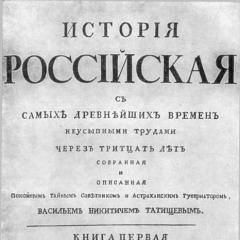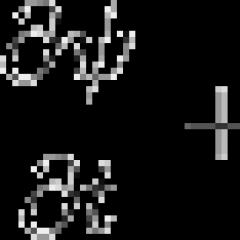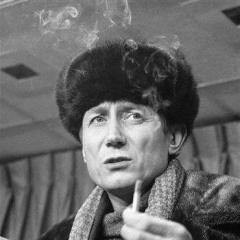Federal State Budgetary Educational Institution of Higher Education “Perm State Agricultural and Technological University named after Academician D.N. Pryanishnikova. Perm State Agricultural and Technological University Pgskha expanded
Higher agricultural education in the Urals turns 100 years old.The history of its development is inextricably linked with the history of the Perm State Agricultural and Technological University. It all started on July 1, 1918 - the Faculty of Agriculture and Forestry was opened at Perm University.In 1923, the faculty received the building where its main building is located to this day, and in 1930 the faculty became an independent university.
Perm State Agricultural and Technological University. History of creation and history of the building - from the women's Mariinsky gymnasium to an agricultural university
In 1859, the famous public figure D.D. Smyshlyaev began collecting funds for a women's gymnasium in Perm. For this purpose, charity evenings were held. At that time, women's gymnasiums were named Mariinsky in honor of Empress Maria Alexandrovna, who contributed to the opening of these institutions in Moscow and St. Petersburg. The Perm Mariinsky Gymnasium was opened at the end of 1860 on Permskaya Street. The duration of training was 8 years.
The city grew, there were more students in the gymnasium, and the question of constructing a new building arose. The city council allocated a place for a new gymnasium - on the corner of Obvinskaya and Petropavlovskaya streets. Built by architect Yuliy Osipovich Dutel. A well-known name, an honored man. It is not surprising that the building he created is today the hallmark of the city.

It was built in the neo-Gothic style. This style was popular in the 70-80s of the 19th century in the West, but not in Russia; the more valuable are the surviving examples. It took three years to build the educational buildings, which were ready in 1887. Later, a hostel building was added and the Church of St. Nicholas of Myra was erected. The gymnasium existed until 1918, then it housed the services of the Red Army Commissariat.
In 1923, the complex was given to the agricultural faculty of Perm State University. In 1930, the faculty was allocated to the Agricultural Institute.
During the war, a hospital was located in the buildings, it operated until 1946, then the building was returned to the university. Today it houses the Agricultural Academy named after D.N. Pryanishnikova. The institute was given the status of an academy in 1995, and the name of a famous Russian scientist - in 1948. On October 26, 2017, the academy becomes an agricultural and technological university.
 Academician Dmitry Nikolaevich Pryanishnikov
Academician Dmitry Nikolaevich Pryanishnikov
This educational institution has its own history. It began on July 1, 1918 with the opening of the Faculty of Agriculture and Forestry at Perm University. The first dean is Doctor of Chemical Sciences, Professor A.I. Lugnac. They trained in the specialties “Agronomy”, “Agrochemistry”, “Forestry”. When the faculty separated into an independent institute, three faculties were created - agronomics, zootechnics, agrochemistry and soil science. Today, the rector of the Perm State Agricultural and Technological University is Yuri Nikolaevich Zubarev, Doctor of Agricultural Sciences, Professor, Honorary Worker of Higher Professional Education of the Russian Federation, Honorary Worker of the Russian Agro-Industrial Complex.
Today's Perm State Agricultural and Technological University named after Academician D.N. Pryanishnikova is a multidisciplinary educational institution, it has 9 faculties, where 7 thousand students study. These are: 1) architectural and construction, 2) engineering, 3) agricultural technology and forestry, 4) veterinary medicine and animal science, 5) land management and cadastre, 6) soil science, agrochemistry, ecology and commodity science, 7) applied computer science, 8) economics , finance and commerce, 9) department of distance learning.
The university employs 40 doctors of science and more than 200 candidates of science. The graduate school trains personnel in 12 specialties. The list of graduates is impressive. These are workers in typical agricultural industries, as well as economists, financiers, land managers, veterinarians, employees of cadastral services, forestry, processing and sales of agricultural products, vehicle service and others.
The university maintains international connections, which are expressed by participation in conferences, symposiums and seminars (USA, UK, France, Germany, the Netherlands, Italy, China), scientific contacts with educational institutions, internships for students and teachers in foreign universities and enterprises.
The university has a modern base for conducting research work. This is the educational and experimental farm "Linden Mountain", an experimental scientific field, an educational and scientific center of the department of horticulture, and a training base for the forestry faculty. There is an anatomical and zoomuseum.
The library plays a significant role in learning. It has 4 subscriptions, 3 reading rooms, 29 library points at the departments. Total area - 1462 sq. m. Number of seats - 219. The library's collection of electronic resources amounts to more than 3 million copies.
 Library of the Agricultural Academy named after. D. N. Pryanishnikova
Library of the Agricultural Academy named after. D. N. Pryanishnikova
There is a student catering network “Perm Mariinsky”, a marketing center, a center for promoting the employment of students and graduates, a center for international relations, a technology development center (NICH TsOT) “Agroresurs”, a quality and information department.
There is everything for sports. A sports complex with an area of 5000 m2 with an athletics arena, six gyms, a sauna, and a herbal bar. This also includes the recreation center "Aelita". Employees and students enjoy discounted rates. Competitions in various sports are held here.
The university has its own publishing and printing center “Prokrost”. There is a center for international relations. The network of student cafes, which unites three canteens, four cafes and a herbal bar, provides excellent food for students and teachers.
There is a marketing center that allows you to get a second education or improve your qualifications, a career guidance center and preparatory courses. In general, there is everything for a fruitful and interesting life for applicants and students. The university is proud of its graduates, who contribute to the development of the Russian economy. The educational institution turns one hundred years old this year.
Marina Ryzhova
Today's Perm State Agrarian and Technological University named after Academician D. N. Pryanishnikov is a multidisciplinary educational institution, it has 9 faculties, attended by 7 thousand students. These are: 1) architectural and construction, 2) engineering, 3) agricultural technology and forestry, 4) veterinary medicine and animal science, 5) land management and cadastre, 6) soil science, agrochemistry, ecology and commodity science, 7) applied computer science, 8) economics , finance and commerce, 9) department of distance learning.
The university employs 40 doctors of science and more than 200 candidates of science. The graduate school trains personnel in 12 specialties. The list of graduates is impressive. These are workers in typical agricultural industries, as well as economists, financiers, land managers, veterinarians, employees of cadastral services, forestry, processing and sales of agricultural products, vehicle service and others. The university maintains international connections, which are expressed by participation in conferences, symposiums and seminars (USA, UK, France, Germany, the Netherlands, Italy, China), scientific contacts with educational institutions, internships for students and teachers in foreign universities and enterprises.
The university has a modern base for conducting research work. This is the educational and experimental farm "Linden Mountain", an experimental scientific field, an educational and scientific center of the department of horticulture, and a training base for the forestry faculty. There is an anatomical and zoomuseum. The library plays a significant role in learning. It has 4 subscriptions, 3 reading rooms, 29 library points at the departments. Total area - 1462 sq. m. Number of seats - 219. The library's collection of electronic resources amounts to more than 3 million copies.
The agro-industrial complex is currently developing at an accelerated pace. For this reason, agricultural specialists are in great demand. To obtain the education necessary to work in the agricultural sector, you can try to enroll in the Perm Agricultural Academy (PGSHA). This is a state university that has been operating for over 80 years and offers applicants paid and free education.
General information about the educational institution
The current Perm State Agricultural Academy was founded in 1930. The educational institution was based on a faculty of this profile, taken from the local classical university. The name of the educational organization at that time was not the same as it is now. It was called the Ural (and later Perm) Agricultural Institute.
For several decades the university had the status of an institute. In 1995 it became an academy. The educational institution does not yet reach the status of a university. It is quite possible that in the future the academy will be able to achieve it, because it is improving its activities. Now it is considered a leading, dynamically developing, multidisciplinary center of agricultural education and science
First impression of the academy
Applicants who submit documents have a positive impression of the university, because applicants are offered a wide selection of programs. According to statistics, the academy implements:
- 25 undergraduate educational programs;
- 15 specialty programs;
- 17 master's programs;
- 10 programs for training scientific and pedagogical personnel in graduate school.
If you wish, you can choose a full-time, part-time (evening) or correspondence form of study at the academy. The latter is the most popular. In October 2016, there were 3,893 students, of which 1,137 people studied in budget places. The increased interest of applicants in correspondence courses is caused by the convenience of obtaining higher education without interrupting work.

Analysis of available areas of training and specialties
Many people think that the Perm State Agricultural Academy offers only those areas of training and specialties that correspond to its profile. In fact, this is partly true. The main part of the list of educational programs really consists of areas and specialties related to agriculture (“Gardening”, “Agronomy”, “Agroengineering”, “Agrochemistry and agro-soil science”, etc.).
The admissions committee of the Perm State Academy of Agricultural Sciences also offers such directions and specialties that allow graduates to find creative work. One of these educational programs is “Landscape Architecture” (profile - “Landscape and garden construction”). The curriculum in this area provides for the study of decorative dendrology, design and maintenance of landscape architecture, and floristry. After graduation, graduates are employed as specialists in a landscape company, designers of office and residential premises, and master florists.

Promising educational programs
For those wishing to obtain in-demand and modern professions not related to agriculture, the Perm State Agricultural Academy has suitable options. Judging by the reviews of applicants, the university offers the following areas of training and specialties that will allow graduates to work in the future:
- auditors;
- accountants;
- credit experts;
- programmers-economists;
- Web application developers;
- financial analysts;
- managers.
An interesting and promising specialty is “Veterinary Medicine” (specialization: “Diseases of small domestic animals”). Here, students receive the knowledge necessary for veterinarians, paramedics, veterinary laboratory specialists (microbiologists, bacteriologists, pathologists), and veterinary sanitation experts.

Admission to the Agricultural Academy
It is not difficult to enroll in PGSHA. Applicants talk about this process in their reviews. It all starts with choosing the direction of training or specialty. It is best to make a decision immediately after entering 11th grade. The sooner this is done, the sooner it will be possible to begin preparing for the Unified State Exam in those subjects that are necessary for admission to the PGSHA.
The next stage is collecting documents. When submitting an application to the admissions committee, applicants provide a passport and educational document. Those individuals who need to take entrance tests at the academy still need to bring two small photographs.
After submitting the documents, all that remains is to wait for the entrance tests. They are held at the university for those applicants who do not have Unified State Examination results and who enroll on the basis of secondary vocational or higher education. After the completion of the admissions campaign, passing scores for budget places are determined, and an order is issued for enrollment in full-time, part-time and part-time studies.

Passing score information
This indicator is determined for each area of training, for each specialty. Let's consider the passing score in the PGSHA for 2017 for the most interesting and popular educational programs in full-time and evening forms of study (the first figure is taken from the order of August 3, 2017, and the second from the order of August 8, 2017):
- at “Agroengineering” - 142 and 137;
- in “Veterinary Medicine” - 196 and 190;
- on “Landscape Architecture” - 149 and 161;
- on “Gardening” - 126 and 108;
- on “Food products from plant materials” - 122 and 136.
Applicants about tuition fees
Not all people who apply to the Perm State Agricultural Academy manage to enroll on the budget. Persons who have become students of a paid department should take into account that tuition prices are not the same for everyone. They depend on many nuances:
- forms of training;
- course;
- areas of training or specialty;
- existing education.
At full-time bachelor's degrees, the most inexpensive educational programs are Economics, Management, and Commodity Science. For the 2017/2018 academic year, the cost of studying in the 1st year was set at 83 thousand 600 rubles, in the second year - 86 thousand 800 rubles, in the 3rd year - 90 thousand rubles, but in the 4th year - 93 thousand 600 rubles. The highest cost was in the “Veterinary” specialty - from 97 thousand 800 rubles. For full-time, part-time, and accelerated forms, tuition prices are naturally several thousand rubles lower.

It is a good educational institution. However, at the end of 2016 it became known that PGSHA did not pass accreditation. Many thought that the university provided low-quality educational services. But the truthful information was a little different. Rosobrnadzor conducted a scheduled inspection at the university. Based on its results, experts identified some shortcomings at the Faculty of Economics. Due to their presence, Rosobrnadzor suspended the state accreditation of the academy.
This measure did not pose any serious threat to the university and did not indicate the ineffectiveness of the educational process. It was applied only to guarantee the elimination of deficiencies due to which PGSHA did not pass accreditation. Rosobrnadzor ordered to eliminate all violations and provide a report on the work done by December 30, 2016. The Academy fulfilled all these requirements. As a result, accreditation at the Faculty of Economics was restored.



